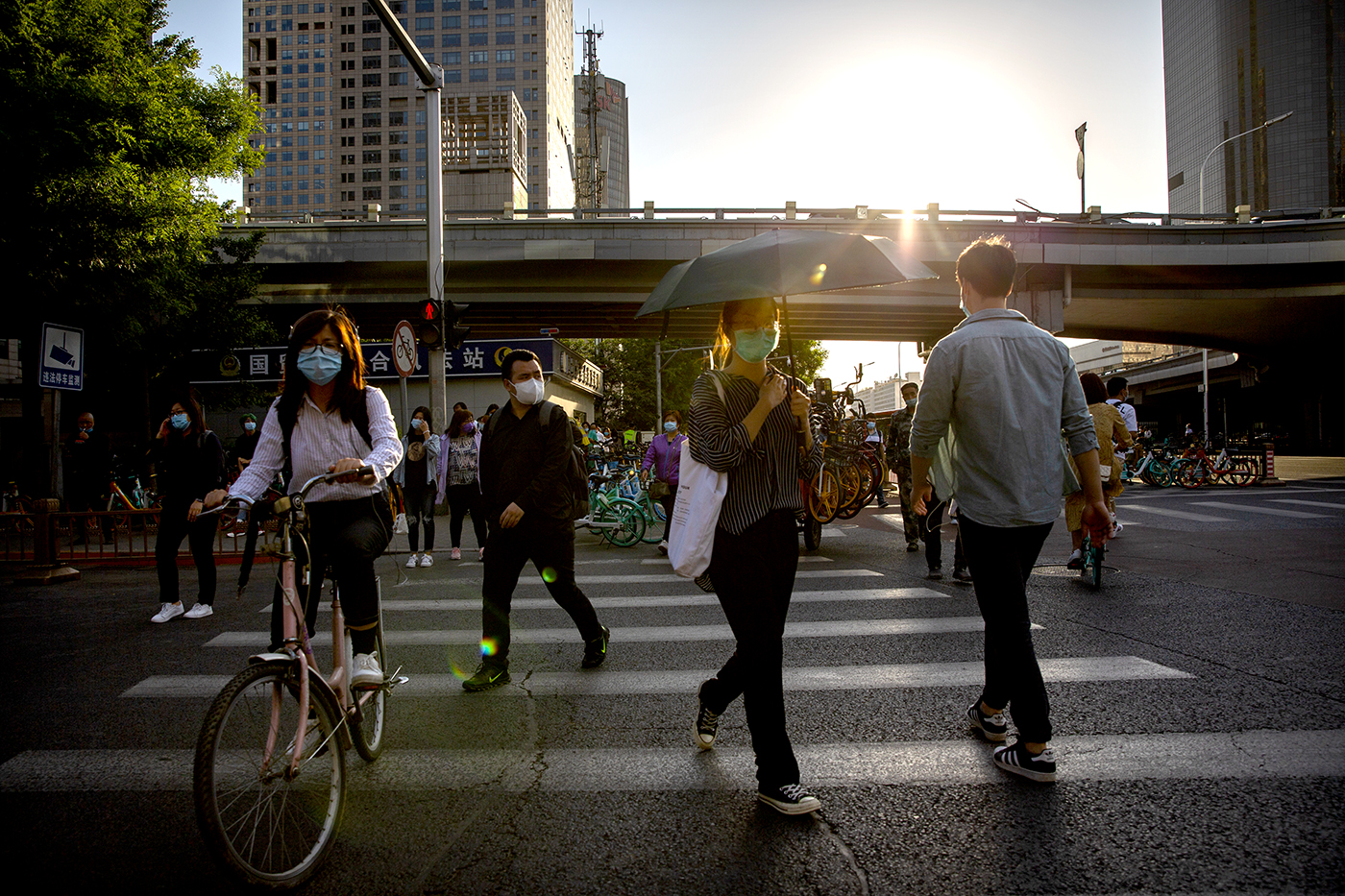Record-high levels of public debt, geopolitical conflicts that put the world’s trade system in jeopardy, and the likelihood that productivity improvements will remain sluggish will likely result in slow global growth that will stifle some nations’ development even before it begins.
This past weekend, researchers from the Kansas City Federal Reserve conducted research that led to that somber assessment of the post-pandemic state of the world economy. In a time when the Russian invasion of Ukraine and the conflict between the United States and China have undermined a once-broad global agreement, at least in theory, to boost the free flow of goods and services, it examined issues like the outlook for technological innovation, public debt, and the state of international trade.
“The environment is more precarious currently for countries. They dealt with a pandemic by devoting a lot of their financial resources to it.The decoupling between the West and China, geoeconomic fragmentation, trade tensions, and policy-driven forces are other factors, according to IMF senior economist Pierre-Olivier Gourinchas, who spoke in an interview on the sidelines of a Fed conference here. “If we reach a point where a significant portion of the world is lagging behind and has a high population, that puts enormous pressure on both the demographic situation and migration pressures.”

According to Gourinchas, it is possible that global growth will trend at around 3% annually, well below the rates above 4% seen when China’s rapid economic growth drove up global output. Some economists view this level of growth as bordering on recessionary in a world where large, less developed nations should still be able to make rapid progress.
But in the newly developed pandemic economy, “the global growth environment has become very challenging,” according to Maurice Obstfeld, a former IMF chief economist who is currently a fellow at the Peterson Institute for International Economics in Washington.
China is currently experiencing economic issues that could be long-lasting, along with population decline. Emerging industrial policies in the United States and countries are rearranging global production chains in ways that may be less efficient but also more long-lasting or fulfill national security goals.

The conference is one of the first significant efforts to assess longer-term economic consequences following the pandemic and amid heightened geopolitical tensions following years in which policymakers were initially obsessed with combating COVID-19 itself, then had to concentrate on a global breakout of inflation.
There was a general understanding among economists and decision-makers that two tendencies from before the pandemic, both of which had an impact on global growth, had been exacerbated by the health crisis and other recent events.
According to a paper by IMF economist Serkan Arslanalp and University of California, Berkeley economics professor Barry Eichengreen, after skyrocketing during the Global Financial Crisis 15 years ago, the ratio of public debt to global economic output has increased to 60% from 40% and is likely now at a point where significant debt reduction is not politically feasible.
According to their analysis, the effects of public debt that is “here to stay” vary by country, with higher-debt but higher-income countries like the United States likely able to manage over time, while smaller countries may have future debt crises or unavoidable fiscal constraints.

According to Cornell University economist Eswar Prasad, the consequences might be catastrophic if public borrowing pulls capital away from nations with still-growing populations and underdeveloped economies.
When considering the regions of the world that are labor-rich but capital-poor, he stated, “this puts us in a depressing setting.” While major European countries, Japan, China, and the United States all have aging populations, other African countries, like Nigeria, continue to experience rapid population growth.
With “A MORE NAIVE TIME,”
The other pre-pandemic tendency that has persisted and been more pronounced is a growing receptivity to policies that vary from the overtly protectionist tariffs put in place by former U.S. President Donald Trump to the attempts of the Biden administration to bring manufacturing of things like computer chips back to the United States.
Jared Bernstein, the chair of the White House Council of Economic Advisers, stated at the symposium that the Biden administration’s industrial policies weren’t necessarily biased in favor of or against more global trade because many of the intermediate items required to produce, say, silicon chips would be imported.

During one discussion, Bernstein stated, “In my view, the strategies we are pursuing despite a lot of heated rhetoric implies neither more nor less trade.”
Others pointed out that the Russian invasion of Ukraine and the quick severance of the European power system from Russian electricity undermined one of the central tenets of the globalization movement: that trade would forge strong alliances, if not outright allies.
Ben Broadbent, deputy governor of the Bank of England, recalled “a time, perhaps a more naive time…when more trade would create friends.”
Ngozi Okonjo-Iweala, the director-general of the World Trade Organization, claimed that while the pandemic presented valid concerns about the robustness of the global supply chain, particularly for sensitive goods like pharmaceuticals, the decision to rearrange global production patterns ran the danger of missing out on growth prospects.
You can see how appealing it is from a political standpoint to claim that since we see the weaknesses, we will strive to conduct business with folks who share our beliefs, she added. Regardless of the tactic, however—”nearshoring,” “friendshoring,” or “reshoring”—she asserted that “maybe you could go a little bit further…If you must diversify, reach out to individuals who have historically been on the periphery of the global economy.
“Friends,” she said, “can change,” a provocative remark at a time when Trump, who levied tariffs against Europe, is running once more and just floated the possibility of an all-imports tax.
If there was any hope, it was in the notion of improvements in artificial intelligence as a potential source of increased productivity.
Even still, the potential harm posed by the technologies and the evidence that innovation was becoming exponentially more difficult had to be considered.
Even beyond that, any advantages might take time to materialize.
Nela Richardson, chief economist for payroll processor ADP, compared the developer of high-end exercise cycle systems with ChatGPT and stated, “I think of ChatGPT like Peloton.” “Any number of people can work from home. It doesn’t necessarily follow that they will use it.
Download The Radiant App To Start Watching!
Web: Watch Now
LGTV™: Download
ROKU™: Download
XBox™: Download
Samsung TV™: Download
Amazon Fire TV™: Download
Android TV™: Download

